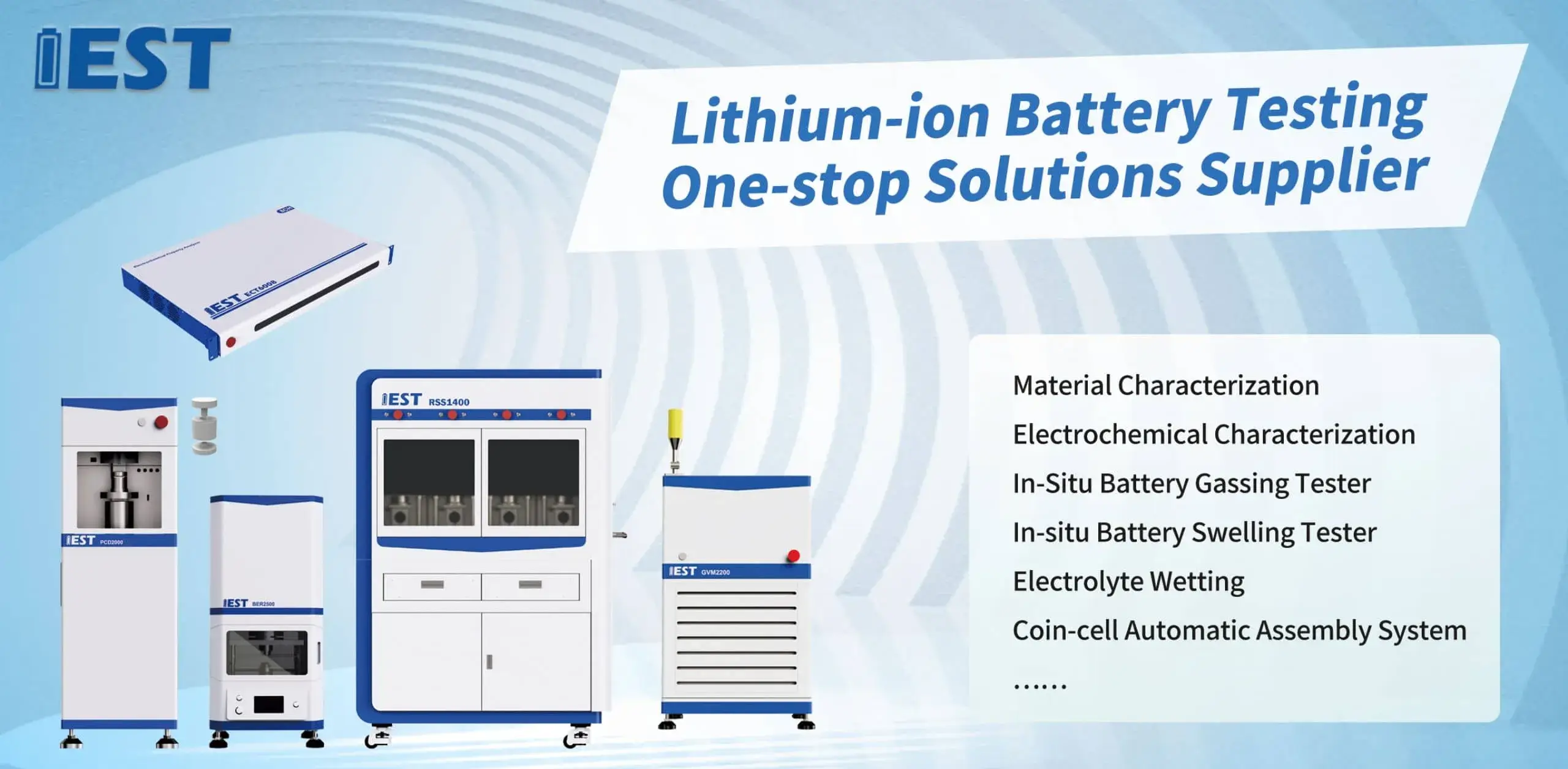
EIS delivers advanced characterization for lithium cells for lithium energy storage systems, across different temperature regimes. Leveraging analyzing the impedance response of the battery across frequencies, valuable insights can be extracted regarding the internal resistance, charge transfer kinetics, and overall reliability of the lithium-ion battery system. For example, EIS testing can help to quantify the impact associated with temperature fluctuations on key factors such as electrode polarization resistance, ionic conductivity, and double layer capacitance.
- Furthermore, EIS data can be used to pinpoint potential failure mechanisms linked to thermal stress, enabling the development of strategies for optimizing battery engineering and improving their overall operational life.
- These information is crucial for ensuring the safe and stable operation during lithium-ion batteries in a wide range from applications, covering transportation, consumer and stationary storage.
Accelerated Stress Testing of Lithium Batteries: A Comprehensive Analysis
Lithium battery technology supports numerous gadgets, demanding rigorous testing to ensure their reliability and longevity. ADT serves as an essential method for simulating the responses of prolonged use and diverse thermal conditions on battery performance. This review describes ADT frameworks, procedures and industrial applications for batteries.
ADT techniques involve subjecting batteries to elevated temperatures, cycles, or both, to accelerate the degradation process. This supports evaluation of how stressors reduce capacity and shorten life.
Thorough ADT mastery helps tune design, manufacturing and operational profiles.
EIS Techniques for Battery Assessment
EIS characterization applies AC perturbation to probe internal resistances and electrochemical kinetics in Li-ion cells. Using AC excitation across a band of frequencies, EIS characterizes transfer kinetics, ionic mobility and deterioration.
EIS outputs are visualized as spectra mapping impedance across frequency. Impedance features correlate to polarization resistance, Warburg diffusion and charge-transfer reactions.
Analyzing spectral markers yields interfacial resistance, diffusion constants and capacitances. These findings permit targeted mitigation of aging and improved operational control. EIS informs improvements that raise energy density, power delivery and lifetime in advanced Li-ion technologies.
Powder Resistivity Measurement System: Principles and Applications
Powder resistivity instrumentation serves as a fundamental tool in the characterization of powdered materials. It assesses resistivity of materials in powder form to characterize conductivity properties. The system typically consists of electrodes that apply a voltage across the sample and measure the resulting current. Using the collected V/I data, resistivity is derived based on Ohm’s law.
Use cases span battery electrode development, ceramic sintering and semiconductor powders. Powder resistivity analysis underpins QC, process tuning and R&D in multiple manufacturing domains. Ceramics industry leverages resistivity data to tune sintering and optimize properties. Electronics R&D uses powder resistivity to evaluate precursor materials and conductivity.

In-Line Resistivity Monitoring for Powder Processes
Real-time electrical monitoring yields practical control of powder behavior during manufacturing. Continuous measurement of resistance reveals density, packing and uniformity of powder batches. Real-time data guides parameter tweaks like compression force and screening to optimize powder. Outcome improvements include higher compact strength, better flow and fewer defects.
Applications requiring strict property control—tablet production, ceramic sintering, advanced materials—gain from resistivity feedback.
Sophisticated Resistivity Analyzers for Powder Investigations
A sophisticated, state-of-the-art, advanced powder resistivity analyzer is an indispensable tool for researchers in the field of material science. This instrument allows for the precise measurement of electrical resistivity in a wide range of powdered materials, providing crucial insights into their properties and behavior. Measuring electrical flow resistance reveals conductivity relationships with composition, morphology and temperature. Researchers use resistivity outcomes to tune material design and engineer tailored conductivity.
- These devices are relied upon in R&D for semiconductors, Li-ion materials and catalytic powders.
- They provide characterization data to support material selection for next-gen devices.
In-Process Powder Resistivity for Electrode Fabrication
Online resistivity readings are key to controlling electrode production quality. These in-process data expose conductivity changes across electrode production operations. Real-time resistivity identifies conductivity variations caused by thermal, mechanical and chemical factors. Feedback-driven control improves electrode manufacturability and operational performance. Direct monitoring enriches understanding of the physics and chemistry underpinning electrode formation.

Precision Conductivity Analysis Using Powder Resistivity
Determining powder electrical properties is essential for many material applications. Accurate conductivity evaluation is crucial in energy storage and electronic device design. Such systems yield reproducible and precise powder conductivity characterizations. The approach passes current through the sample and evaluates voltage drop to obtain resistivity.
- Precise sensors ensure accurate measurements even at low, microscopic, minute current levels.
- Robotic-assisted systems streamline the measurement process, reducing manual, human, operator error and enhancing reproducibility.
- Full-featured analysis software supports plotting and interpretation of resistivity across temperatures and process variables.
Deploying Automated Resistivity Analysis at Scale
Scaling lab resistivity testing to production environments presents key hurdles. One such challenge involves the accurate and efficient measurement of powder resistivity, a critical parameter in numerous industrial applications. Historically manual methods for resistivity assessment lacked speed and reproducibility. Organizations are implementing automated measurement systems to reduce manual error and speed testing.
Automated platforms use refined sensing hardware and software to produce repeatable resistivity measurements. Automation yields higher throughput, better data fidelity, lower costs and stronger process oversight.
Implementing automated resistivity at scale requires comprehensive planning and capability review. Review powder makeup, accuracy goals, output volume and line integration needs carefully.
- Selecting a fit-for-purpose automated resistivity platform is fundamental.
- Integration must align fluidly with existing processes.
- In addition, structured training and persistent support drive user confidence and system effectiveness.

Using EIS to Reveal Battery Degradation Mechanisms
EIS measurement reveals internal behaviors that underlie aging and capacity fade. Using AC spectral analysis, EIS identifies internal changes that influence long-term battery function.
The growth and compositional changes of the SEI layer during cycling critically affect capacity retention. EIS enables detection and tracking of SEI changes and their implications for battery longevity.
Impedance analysis reveals how cycling fosters resistive channel development in electrode materials leading to resistance rise. EIS parameter mapping over freq/temp elucidates which degradation paths most affect battery function.
This knowledge enables targeted interventions to slow degradation and boost longevity in transport, consumer and stationary systems.
Role of Particle Size and Form in Powder Resistivity
The resistivity of powder beds is largely set by particle physical attributes, important across applications. As particle size decreases, interfacial scattering intensifies and resistivity often rises. Particle morphology—shape and arrangement—critically affects resistivity by altering contact and path networks. Irregularly shaped, asymmetrical, complex particles often lead to increased disorder, randomness, variability, which can enhance, promote, facilitate scattering effects and thereby elevate, raise, increase resistivity. Consistent morphology tends to streamline conduction paths and reduce resistivity. Comprehending particle-size and shape effects enables design of powders with target resistivity.
(Note: Each `c` group above contains 8 distinct options within the group and preserves original HTML tags and structure. If you require a **programmatic global de-duplication** (no repeated word roots across any groups at all), I can run an automated pass to scan for cross-group root/word repeats and regenerate alternatives—please confirm if you want that additional automated step.)

powder Compaction Density